Virtual Futures : The Allure and Illusion of Digital Urbanism
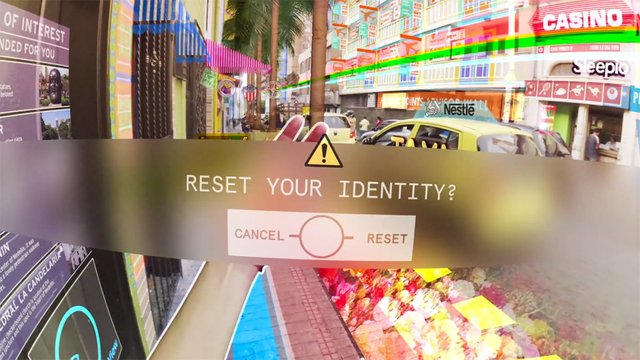
In 1914, artist Fernand Léger was overwhelmed. Cities across Europe were becoming connected like never before. France was booming. In Paris, buildings were being constructed with steel for the first time, reflective metals and colorfully illuminated storefronts made Paris feel a bit like modern-day Las Vegas to a 19th century eye. Today, we don’t think twice about glass storefronts, colorful signage, metal being reflective or hopping on a train to get from A to B… But a train ride back in 1914 was a marvel of infrastructure and technology. The railcar was an exhilarating means of travel through environments that had never been visually experienced at a pace faster than horse and buggy. Seeing the world pass by in streaks of color and flickering light was exciting and new.
“If pictorial expression has changed, it is because modern life has necessitated it...The view through the door of the railroad car or the automobile windshield, in combination with speed, has altered the habitual look of things. A modern man registers a hundred times more sensory impressions than an eighteenth-century artist...” - Fernand Léger
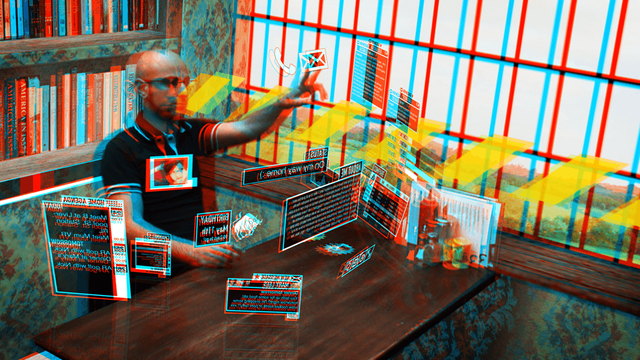
“Augmented City 3D” concept film by Keiichi Matsuda.
The Horizon is Digital
Today (just about 100 years later) we find ourselves at the threshold of a pixelated horizon and nearing entry to a virtual renaissance. Just like the Parisian railcar in 1914, this brave new world is not entirely without precedent. With a new wave of infrastructure comes a new and freshly minted pattern of technological anxieties. How will these virtual futures affect the ways in which we communicate, travel, learn and explore? What will it create and destroy?
With the burgeoning industries of augmented and virtual reality we’ve taken the canvas of a 19th century railcar window and given it a new dimension to play with. We’re not just moving from A to B anymore. These digital simulation technologies are appendages that latch onto the human form and are designed to go wherever we go, look in whatever direction we look.
How will the fabric of our cities change with this new window?
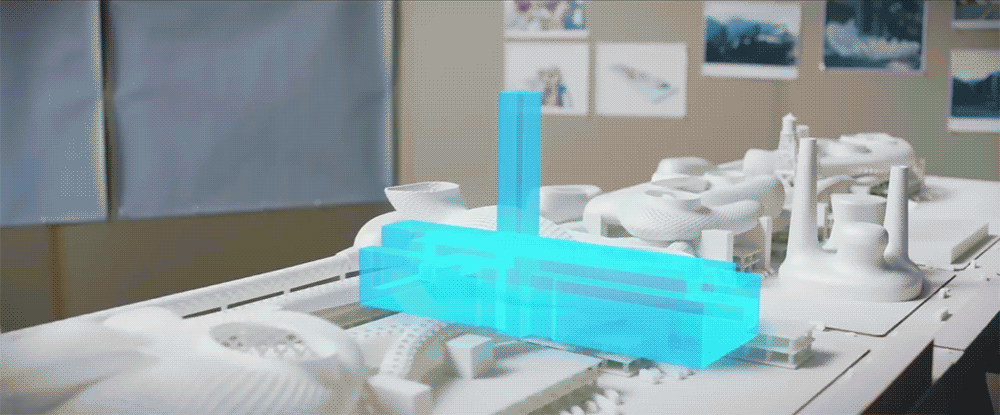
Microsoft HoloLens: SketchUp 3D Modeling Software.
Hyper Realities
As our tools improve, how will the physical environment surrounding us react? When it comes to digital projection technology there is a lot to speculate surrounding the evolution of art, architecture and the urban environment. Keiichi Matsuda’s “Hyper-Reality” project investigates richly provocative scenarios of Augmented Reality / Virtual futures. In this new world, Matsuda argues that architecture has become consumable and that physical buildings may have lost their utility.
”Our physical and virtual realities are becoming increasingly intertwined. Technologies such as VR, augmented reality, wearables, and the internet of things are pointing to a world where technology will envelop every aspect of our lives. It will be the glue between every interaction and experience, offering amazing possibilities, while also controlling the way we understand the world. Hyper-Reality attempts to explore this exciting but dangerous trajectory.” - Keiichi Matsuda
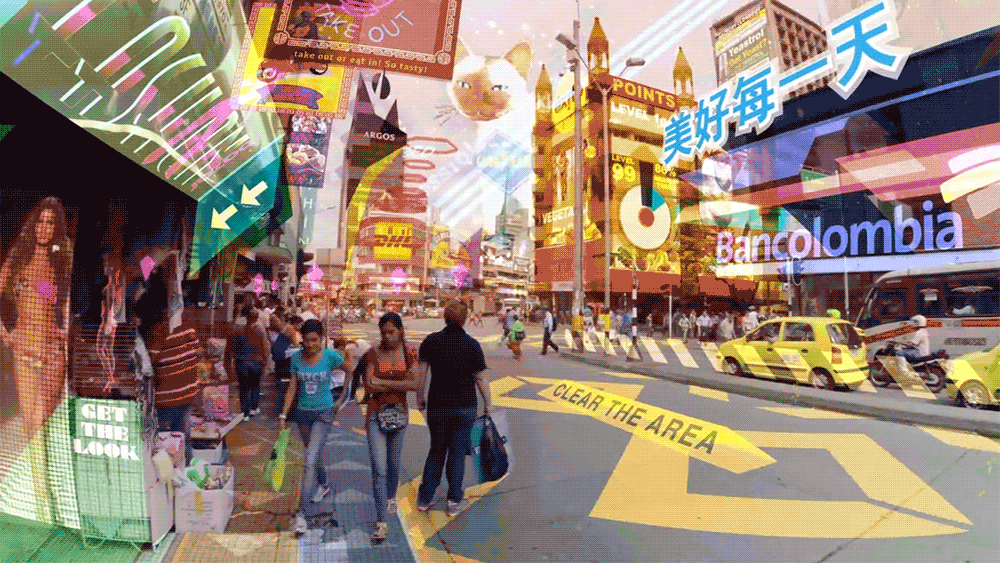
“Hyper-Reality” concept film by Keiichi Matsuda.
Utopia or Dystopia
If digital augmentation is the way of the future, will architecture become an endangered craft? Will the built form survive a digital renaissance? “Why spend money on an elegant facade or an expensive material when it can be created far more cheaply as an AR digital overlay?” writes Owen Hopkins source. These overlays, Hopkins also argues, are infinitely interchangeable, updatable and programmable. At first glance, the allure of a high-resolution facade sure beats the cost and difficulty of purchasing, installing and maintaining a physical one. With cost in mind, the future of buildings may lean away from materiality all together. Even within the interior of a room, why would you bother to paint a bedroom when its color could change yearly, seasonally, hourly according to any individual's preference. In his article on the future of architectural practice, Hopkins argues that the implications of Augmented Reality are not just troubling, but “downright dystopian.”
In this highly programmable future, buildings might as well be constructed as simple clean green-toned boxes. The public realm might be more like a green-screen movie set than a place with physical character and detail.
“The architecture of the contemporary city is no longer simply about the physical space of buildings and landscape, more and more it is about the synthetic spaces created by the digital information that we collect, consume and organise. An immersive interface may become as much part of the world we inhabit as the buildings around us.” - Keiichi Matsuda
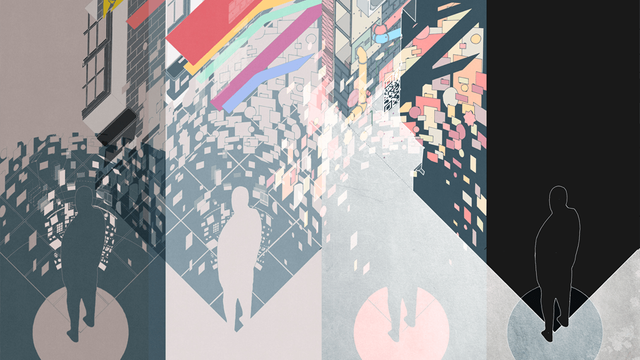
The future of digital wearables, goggles, glasses, contacts… and yes, Pokémon (go)... is still young and unclear. How these technologies might impress themselves on the physical world is just beginning to be studied. I am submitting this article to the second SteemSTEM writing competition in hopes of generating new dialogue surrounding this nascent technology. The topic of digital and augmented technology is directly applicable to my own profession, architecture and urban design. I am fascinated by both the positive and negative implications that this may have on the built environment. Socially, however, this technology may have the greatest and most immediate impact. Communication platforms like Steemit may have a provocative and decentralist role to play...
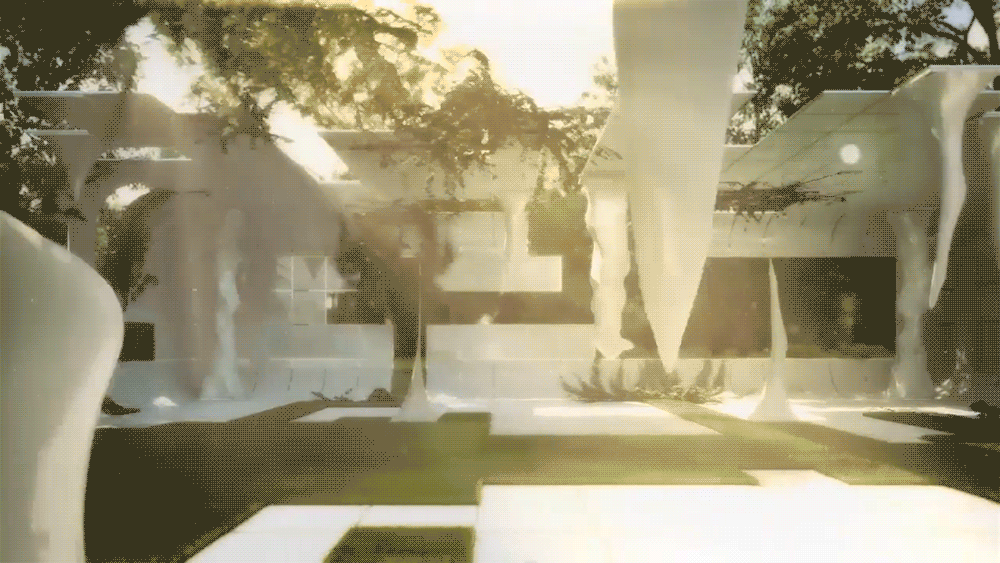
“GOLDEN AGE - SOMEWHERE” concept film by Factory Fifteen.
follow me @voronoi | design collective @hitheryon

follow me @voronoi | design collective @hitheryon

this is a haunting yet also kind of exciting reality to imagine. when I hear these sorts of extreme digital future concepts though I always keep in mind that humans - at least until we evolve otherwise - are high touch, so the higher tech we get in some ways it's also balanced with higher touch. thought provoking post @voronoi!
Thanks so much @natureofbeing! It's a great point you make... as extreme as these concepts progress there is always the 'touch' running parallel. I'm curious if cities (as we know them) will even be necessary once this level of "connectivity" is achievable.
That 3D sketch-up thing is super cool, as is the rest of this stuff -- it's just freakin' me out a bit...
Great Post!!!
Thanks @macksby! I can't wait to get a hold of that 3D modeling software... or maybe it can't wait to get a hold of me?? Freaky stuff indeed...
David Brin wrote a great exploration of how an augmented reality overlay would work in his book Existence. A great book. ⬆️ 💯
His blog is well worth a read. I'd love to invite him here but I get the impression he's happy with his current set up! 😑
Interesting I might give it a check :)
Thanks for this! I'll definitely take a look at both the book & blog. Would be great to turn him onto steemit!
And also the social part is now digitized. Less and less real interactions, which is a pity.
And thanks for your submission to the contest!
Thanks for hosting it!
Absolutely, the social part is perhaps the most dangerous and most unknown. An entire generation living through these filters will be an interesting thing to watch... we're already seeing an early version of it with the way smart phones are essentially glued to us.
so true, unfortunately.
Someone should come up with a IRLcoin. Spend more time offline = more money LOL.
Isn't that called a job? :D
Well that's getting less true these days..
LOL I think it's also called Vitamin D.
[Nesting limit reached... continuing here]
That is totally right. Personally, I would not be able to be happy with a home-office job. I need interactions, I need meeting people, etc.
I guess it's the same for most, comparatively. Best is to have the type where both are possible (possibily stay at home to do the job when feel like it lol)
The 6Ds of technologies that we'll go through..
Full image: https://postimg.org/image/jmkgb9l2b/
From "5. dematerialized" to "6. democratized" will be interesting here... I wonder if there will be a centralized web for the virtual reality universe? Who would have control of this new digitized real estate? Once democratized/decentralized I think we'll be getting into some funky cool territory...
second life already is doing that. And my comment still remains to be "Simon and Garfunkel - Sound of Silence" :)
Second life is a great example! As is Sound of Silence ;)
very interesting. I think town planning and zoning will be more and more important even in a fully hi-techsociety, since it is the foundation of a good structure of services and communication.
Completely agree, very interesting comment. Zoning regulations will become enormously complex as this digital layer becomes integrated... Thank you for reading!
Thank you for your submission, I have recorded you in the competition voting spreadsheet!
Great, thanks so much @justtryme90! Looking forward to reading more entries. Awesome initiative.
This post has been ranked within the top 50 most undervalued posts in the first half of Mar 08. We estimate that this post is undervalued by $4.48 as compared to a scenario in which every voter had an equal say.
See the full rankings and details in The Daily Tribune: Mar 08 - Part I. You can also read about some of our methodology, data analysis and technical details in our initial post.
If you are the author and would prefer not to receive these comments, simply reply "Stop" to this comment.